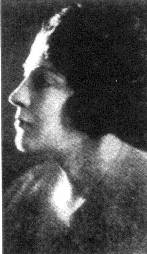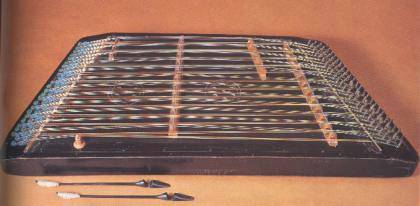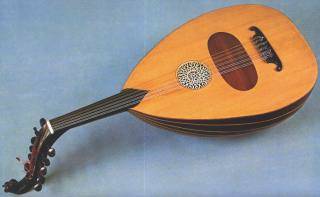| The amanes became emblematic of a style of
music that was both admired for its emotional intensity
and rejected for its association with the oriental and
feminine side of the modern Greek psyche. Kazantzakis's
description of the Greek split personality reflects a
dichotomy noted by many foreign observers of Greece,
beginning with Leigh Fermor's 'Helleno/Romaic Dilemma'
(1966: 96-147), and most subtly delineated by Herzfeld
(1987, chs. 4-5). Like all dichotomies, the division is
not a clean one, and there are areas of overlap, but the
interesting point is that such a dichotomy has been
widely perceived in the Greek personality not only by
outside observers but by Greeks themselves. As Herzfeld
notes, the dichotomy is itself both a European notion and
a literate device (1987: 96). It tends to reinforce
stereotypes, especially about gender and the privileged
position of the European versus the Oriental. Influenced
by nineteenth century accounts of the Orient, the
European-educated Kazantzakis, like Nerval and Flaubert,
aligns the Orient with the female, but not in the sense
Said notes of pure, inarticulate femininity (1979:
186-88). As a Greek, and more importantly, as a Cretan,
Kazantzakis saw himeself as uniquely capable of
synthesizing Hellenism and the Orient (1). His
Apollonian/Dionysian divide between West and East may be
second-hand, but he employs the dichotomy not in order to
privilege the Hellenic side of the Greek character,
rather to honor his maternal inheritance, the mysterious,
dark and oriental soul embedded in the otherwise
pragmatic Greek personality. Not surprisingly, in this context, Kazantzakis describes the Neoellinas as being 'Digenes' (dually-descended, twy-born). Digenes Akritas, hero of the epic Byzantine poem and of numerous folk songs, is, in the epic version, the son of an Arab father and a Greek mother. But as Herzfeld (1987: 104) remarks, in many of the folk song texts, he becomes the son not of an oriental father but of mother who is of marginal or outsider status. As guardian or baron of the Byzantine Empire's Mesopotamian borders, Akritas is geographically as well as socially marginalized. His feats of bravery, his capture by the Arab leader and ultimate recognition as a hero provided Greeks with an ideal myth of Greekness that was exploited by 19th century nationalists (2). Herzfeld compares the character of the redeemed outsider Digenes with the hero of the shadow puppet theater, Karagiozis, also a trickster figure, who successfully uses his wits to reverse his lowly status as a raya (chattel) of the Ottoman Empire. Both the ethnically ambiguous hero of the folk songs and epic poem and the low-born hero of the puppet theater triumph over their origins as well as their enemies. So the Digenes texts become an apt metaphor "for a nation struggling to obliterate a recent history that the tutelary West deemed degrading." (Herzfeld 1987: 106). The fashioning of Greek nationalism in the 19th century was achieved under the gaze of a 'tutelary West' that was so invested in the rebirth of an idealized Hellenism that it sent thousands of volunteers to fight for it. In response, Greeks were initially prepared to present an ideal image of themselves to their supporters. This did not mean that they were unaware of how little the image matched reality. The tension between the expectations of European philhellenism and the reality of an oriental past helped stereotype both the European and the Oriental as extreme poles of the Greek character. This polarization was played out in the 'glossiko zitima', or language question, where katharevousa ('pure' language) came to stand for the European vision of a pure, revived Greekness, and dhimotiki (current language) for the recognition and celebration of an eclectic, heterogeneous past that gives richness to Greek language without sacrificing its national character. Besides the language question, folklore was probably the most important area in which issues of national purity and eclecticism were played out (3). Like the texts, music itself became the nexus of opposed views, and folklorists become leading figures in the struggle to claim folk song as the single most important link between ancient and modern Greece. The fact that many Greek folk songs conform to modal types described by ancient Greek theorists of music appeared to confirm a continuous tradition of melodic composition from the ancient to the modern period. The music of the Orthodox Church, which preserved some of the ancient modes, could also be invoked as an intermediary source. Debate over the origins and character of Greek folk music originally focused exclusively on regional or dhimotiki mousiki but from the 1880s onwards urban music joined rural as part of the broader nationalist controversy (4). At the center of the discussion about urban music was a disagreement about the relative merits of the 'oriental' music performed in the cafes aman and the 'European' music of the cafes chantants. This discussion needs to be placed against the background of a double-descended myth of nationalism that reflected a genuine ambiguity in the Greeks' perception of themselves. On the one hand, what the cafe aman music, especially the amanes, represented, was the oriental side of the modern Greek inheritance. On the other, in contrast to the light and superficial music of the cafe chantant, it was recognized by many Greek intellectuals and musicians to be musically more profound, capable of expressing pathos and grief in a way that western European popular song did not. For those Greeks like Palamas (see Gauntlett, 1989: 13), Kazantzakis (1965: 325), and Yiorgos Phaidros (1881: 2-26), who recognized the depth and passion of a form of music that was non-European in origin, the problem became one of reclaiming it as an essentially Greek phenomenon. How was this to be done? Kazantzakis's association of the amanes or song of bitter grief with the contemporary Greek's oriental and maternal inheritance gives us at least a point of departure. Just as the mother, rather than the father of Digenes Akritas becomes the outsider or marginal figure in the folk song tradition, so the song of pain or amanes is ascribed to the Greek's maternal inheritance. Thus the dark, mysterious, oriental strain of the Greek character is linked to the feminine through the art of lament. As a sort of stylized lament, the amanes is associated, in the Greek tradition, with the female voice. In rural Greece, as in the majority of pre-industrial societies, it is women who sing the laments for the dead, and not only women who are the immediate kin of the deceased, but those who are regarded to be especially skilled in the art of expressing the pain of the community through the improvisation of an artful song (5). In Greece, as a number of researchers have observed (Alexiou 1974: 10-35, Auerbach 1987: 25-43, Caraveli 1986: 169-192, Seremetakis 1991: 99-158), Holst-Warhaft 1992: 14-97, 98-126 ) both laments (moiroloyia) and the women who sing them (moiroloyistres) have been regarded, throughout history, with some ambiguity. They may be considered essential at the time of death, but otherwise they are often avoided, even shunned by Greek men. Moreover, there is a long line of thought in Greece, beginning in antiquity and continuing through the Byzantine period, that associates lament, especially excessive lament, not only with the female, but with the Orient, i.e. with Asia Minor (see Johansen and Whittle 1980, Holst-Warhaft 1992: 130-133). This long association appears to be reflected in the controversy about amanedhes in the Athenian Press summarized by Theodoros Hatzipantazis (1986) and Gauntlett (1987, 1989). In the debate that centered on the Greekness or otherwise of music performed in the cafes aman, the term 'oriental music' as Gauntlett notes, is often synonymous with amanes. As the musical form in which the oriental, i.e. the lamenting (female) voice is showcased, the amanes stands for what is, according to which side of the debate the writer is on, the least or the most Greek genre in the Asia Minor repertoire. The debate highlights the ambiguity that Greeks, more precisely Greek men, feel towards what Kazantzakis saw as the oriental and female side of their own inheritance. A more extreme attempt to claim the amanes as essentially Greek is found in one of the most important documents we have on the subject: Yiorgos Phaidros's article Pragmateia peri tou Smyrneikou Mane i tou Par' Arxaiois Manero ("Treatise on the Smyrna Manes Known to the Ancients as Maneros") written in Smyrna in 1881. Phaidros traces the origin of the amanes to the ancient lament for Linos. Following Herodotus into error he claims that Linos is called Maneros by the Egyptians (6). The lament, origin of song itself, was invented, according to Herodotus, to be sung in honor of the first Egyptian King's son, whose name was Maneros. Phaidros links the ancient Greek song for Linos or Ailinos to modern Greek and Egyptian folk laments. His attempt to derive manes from Maneros is etymologically far-fetched and dictated by his desire to claim the genre as Greek, via Egyptian lament rather than Turkish. While he demands that his own hypothesis of the ancient origin of manes not be rejected, he claims that: "It is, on the other hand, absurd for anyone to call the contemporary manedhes Turkish strains. They are clearly Greek strains that we have inherited from our forefathers and we must guard this inheritance forever" (1881: 18). Notice how, in contrast to Kazantzakis, Phaidros insists that this inheritance is paternal, not maternal. Still more revealing, as Phaidros pursues his etymology, are his remarks about the nature of Turkish makamia:
Phaidros reveals here his ignorance not only of Ottoman music, but also of Greek. The modal types of the minore and matzore were certainly influenced by European music, but they do not indicate merely that a song is written in major or minor key, rather that it is based on melodic material common to major or minor scales. The majority of amanedhes were sung on Ottoman melodic types (makamlar = Gr. makamia). To call the makam 'mode' is somewhat misleading. The scale is not the only determinant of the improvisations performed in each makam. There are also melodic progressions (Turkish: seyir) that characterize the makam and include the emphasis on particular notes and whether those rich and expressive musical resources favored by Greek as well as Turkish singers. The interchangable use of the terms gazel, manes, amanes and gazeli, sometimes hyphenated, on record labels suggests that the recording companies and presumably the musicians themselves made no distinction between them. As a lyric form, it is possible to characterize the Ottoman gazel as a stylized romantic genre of poetry, composed in quatrains.
Within the genre of amanes there are various sub-groupings according to the musical mode of the particular amanes or to a song type such as Tzivaeri, Galata, or Tabahaniotiko. Since each makam is not a scale but a group of melodic passages in one or more tone levels, the particular makam will dictate the melodic contour of each amanes. We may also be able to speak of an association of a particular group of makamlar with Greek amanedhes. Of the entire range of makamlar, the sabak, nihavent, hidzaz and houzam seem to have been among the most commonly used by Greek singers. There are also sub-groupings of the amanedhes according to the rhythm of the introduction and finale which may be in the dance rhythms of tsifteteli, ballos, syrtos, etc. In the faster rhythmic finales to the amanedhes there are even examples of tango and waltz that change the mood of the piece to something quite light-hearted, but that does not alter the fact that the dominant mood, at least of the Greek amanes, is tragic. In fact it may be a deliberate device to break the despairing tone of the piece (7). As a form of stylized lament, as Phaidros correctly noted, the amanes has links to Greek folk laments and by association, to a feminine genre. This does not mean to say that it was necessarily sung by women, as we know from numerous male recordings, but that it was a form Greeks may consciously or unconsciously felt particularly suited to the female voice because of the association with laments. In Phaidros's article about the manes, it is curious that that the first example he uses to support his assertion that the mane or amanes is derived from ancient Greek lament is not a lament but another genre dominated in the folk tradition by women. It is a lullaby that he says was still being sung in Smyrna at the time he was writing his article (op. cit.: 1-2):
Phaidros may have chosen his example simply for the repeated 'e' sounds or the melismatic vocal style, but there is interesting support for his association of lullaby with laments and with amanedhes in general in a recording by Marika Politissa made in Athens between 1929-1931 on the Odeon label. The title given is the original Turkish (Nini) and it is designated as a manes.
The coupling of amanedhes both with laments and lullabies confirms their association with the female voice. The association of lullaby with lament is not unique to Greece. In the Finnish-speaking area of Karelia, formerly occupied by Russia and later part of the Soviet Union, lament/lullabies were common for girl children, whose inevitably miserable lives were considered a fate worse that death (Nenona-Kalio 1982: 101). Similarly laments for brides, usually sung by their mothers and female relatives are a common phenomenon not only in Greece but in China and many other societies (see, for example, Blake 1979, Danforth 1982, Kligman 1988). What emerges from the cross-cultural comparative studies of laments is that with very few exceptions, they, like lullabies and most other songs that mark rites of passage or stages in the life cycle, are not only women's songs but associated with a certain emotional intensity that may be admired, even sought out by men in times of crisis but at other times may also be considered unmasculine, over-emotional, even threatening. |


